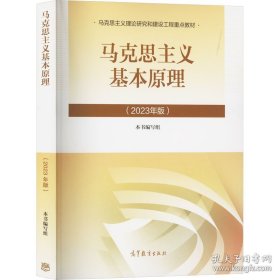
岩体各向异性动态破裂与地震评估(英文版)
¥ 20 1.4折 ¥ 139 九品
仅1件
送至北京市朝阳区
运费快递 ¥5.80
作者郦永刚 编
出版社高等教育出版社
出版时间2016-02
版次1
装帧精装
货号a79-3
上书时间2024-09-23
评价1309好评率 99.62%
- 店主推荐
- 最新上架
商品详情
- 品相描述:九品
图书标准信息
- 作者 郦永刚 编
- 出版社 高等教育出版社
- 出版时间 2016-02
- 版次 1
- ISBN 9787040443455
- 定价 139.00元
- 装帧 精装
- 开本 16开
- 纸张 胶版纸
- 页数 282页
- 字数 380千字
- 正文语种 英语
- 丛书 全球变化与地球系统科学系列
- 【内容简介】
-
《岩体各向异性动态破裂与地震评估(英文版)》介绍地震学和地球物理研究领域的实用方法和技术。全书共6章,分别由国外大学和国内研究所从事地震前沿工作的研究人员和博士生导师撰写。内容涵盖:
◆岩体各向异性,横波分裂、裂隙介质中的三维射线跟踪方法及应用
◆岩体破碎过程的离散元模拟方法、精示地震中岩体胀缩比和内摩擦角
◆岩石动态破裂学分析地震核化和应力重新分布
◆地震评估中震矩和断层测量参数之间的线性回归分析与实倒
◆图像信息统计方法和地震概率相对增量逆向跟踪与实例
◆全地震信息的概率分析与太平洋岛国震灾评估
《岩体各向异性动态破裂与地震评估(英文版)》作者分别在各章节中对上述方法作了详尽阐述和公式推演,并给出了应用实例。理论与实践融合贯通。《岩体各向异性动态破裂与地震评估(英文版)》适合作为高等院校地球物理和地震学研究生教学课程的参考书,也可供地震领域研究人员借鉴。 - 【目录】
-
Rock Anisotropy, Fracture and Earthquake Assessment
Seismic Wave Propagation in Anisotropic Rocks with
Applications to Defining Fractures in Earth Crust
1.1 Introduction
1.2 Elastic Anisotropy of Crustal Rocks
1.2.1 Anisotropic Symmetry System
1.2.2 Transversely Isotropic Medium
1.2.3 Anisotropy of Fractured Rock
1.3 Plane Wave Propagation in Homogeneous Anisotropic Medium
1.3.1 Phase Velocities of Body Waves in Anisotropic Media
1.3.2 Group Velocities of Body Waves in Anisotropic Media
1.3.3 Body Wave Polarizations
1.4 Reflection and Refraction of Plane Waves at a Planar Boundary between Anisotropic Media
1.4.1 Slowness Surface Method
1.4.2 Reflection and Transmission Coefficients
1.5 Ray Tracing in Anisotropic Heterogeneous Media
1.5.1 Ray Series Method
1.5.2 Body-Wave Polarization
1.5.3 Geometrical Spreading and Ray Amplitudes
1.5.4 Specification of a Source and Ray Synthetic Seismogram
1.5.5 Least-Squares Inverse for Traveltime
1.6 Ray Series Modeling of Seismic Wave Propagation in 3-D Heterogamous Anisotropic Media
1.6.1 The VSP Experiment at Hi Vista and Shear-Wave Splitting Observations
1.6.2 Theory
1.6.3 Traveltime and Amplitude Modeling Results 101
1.7 Observation and Modeling of Fault-zone Fracture Seismic Anisotropy
1.7.1 The Experiment and Data
1.7.2 Seismic Wave Traveltimes in a Heterogeneous Anisotropic Medium
1.7.3 Polarization of Plane Waves in an Aligned Fracture AnisotropicMedium
1.8 Shear Wave Splitting Observations and Implications on Stress Regimes in the Los Angeles Basin, California
1.8.1 Tectonic Significance and Geological Setting
1.8.2 The Data and Method
1.8.3 Implications from Shear Wave Splitting Observations
1.8.4 Ray Tracing
Acknowledgements
References
2 Reproducing the Realistic Compressive-tensile Strength Ratio of Rocks using Discrete Element Model
2.1 Introduction
2.2 A Brief Introduction to the ESyS-Particle
2.2.1 The Equations of Particle Motion
2.2.2 Force-displacement Laws and Calculation of Forces and Torques
2.3 The New Criterion for Bond Breakage
2.3.1 Macroscopic Failure Criterion
2.3.2 Particle Scale Failure Criterion in DEM Model
2.3.3 A New Failure Criterion for DEM
2.4 Calibration Procedures 152
2.4.1 Input Microscopic Parameters and the Desired Macroscopic Parameters
2.4.2 Sample Generation
2.4.3 Numerical Set-ups
2.5 Parametric Studies
2.5.1 Elastic Parameters
2.5.2 Fracture Parameters
2.6 Discussions and Conclusions
Acknowledgements
References
3 Rock Fracture under Static and Dynamic Stress
3.1 Introduction
3.2 Stress Intensity Factor and Stress Field
3.3 Coulomb-Mohr Failure Criterion
3.4 Energy Release and J-integral
3.4.1 Energy Release Rate
3.4.2 J-integral
3.5 Crack Growth
3.5.1 Maximum Hoop Stress Theory
3.5.2 Strain Energy Density Theory
3.6 Crack Growth under Dynamic Loading
3.6.1 Dynamic Crack Propagation in Rock
3.7 Cohesive Model in Rock Fracture
3.7.1 Stress Change in Slip-weakening Model
3.7.2 Relationship between Energy Release Rate G and the Parameter in Slip-weakening Model
3.8 Numeric Method for Fracture Mechanics
3.8.1 Singularity Element Method
3.8.2 Extended Finite Element Method
3.9 Discussion
Acknowledgements
References
4 Multiple Linear Regression Analyses on the Relationships among Magnitude, Rupture Length, Rupture Width, Rupture Area, and Surface Displacement
4.1 Introduction
4.2 Data
4.3 Linear Models and Computational Approach
4.4 Results
4.4.1 Simple Linear Regression Results
4.4.2 Multiple Linear Regression Results
4.4.3 Model Diagnostics
4.4.4 Comparison between Multiple Models and Simple Models
4.4.5 Model Fits on the Slip Factors
4.5 Concluding Remarks
Acknowledgements
References
5 PI Algorithm Applied to the Sichuan-Yunnan Region: A Statistical Physics Method for Intermediate-term Medium-range Earthquake Forecast in Continental China
5.1 PI Algorithm
5.1.1 Background and Basic Concepts
5.1.2 Algorithm Validation
5.1.3 Test of the Algorithm: ROC and Beyond
5.2 The Sichuan-Yunnan Region
5.2.1 Seismicity and Earthquake Catalogue
5.2.2 Tectonic Setting
5.2.3 The 2008 Wenchuan Earthquake
5.3 PI Algorithm Applied to the Sichuan-Yunnan Region
5.3.1 Parameter Setting
5.3.2 Sliding Window Retrospective Test
5.3.3 Ergodicity
5.4 Discussion and Development of PI Application
5.4.1 PI for Annual Estimate of Seismic Hazard: Useful, or Useless?
5.4.2 The 2008 Wenchuan Earthquake: Miss, or Hit?
5.4.3 Sichuan-Yunnan versus Andaman-Sumatra: Separate, or Connected?
5.5 Concluding Remarks
Acknowledgements
References
6 Probabilistic Seismic Hazard Assessment for Pacific Island Countries
6.1 Introduction
6.2 Data
6.2.1 Historical Earthquake Catalogs
6.2.2 Subduction Segments, Crustal Faults and Geodetic GPS Data
6.3 Kinematic Modeling Based on GPS and Active Faults Data
6.4 Modeling the Regional Seismicity
6.5 Probabilistic Seismic Hazard Maps
6.6 Discussion
Acknowledgements
References
为你推荐

地上看山西刷边现货
全新营口
¥321.00

现货【外图台版】沈氏尊生书(上/下)(6-9) / 沈金鳌 自由出版社
全新厦门
¥225.00

王明反革命言论集(上下册)
八五品上海
¥180000.00

风声·雨声·读书声 朱学勤 三联读书文丛精选
全新广州
¥34.00

马克思主义基本原理
八五品北京
¥5.00

《增补象吉通书大全》29卷线装两函12册一套,(明)魏明远撰,民国上海广益书局石印本,此书后出转精,清晰度远超清刻本,正版实拍,品相如图,孔夫子孤本!
七五品北京
¥39800.00

管锥编(全五册)
八五品南京
¥130.00

林副统帅军事论文选集
八品商丘
¥964.00

悉达多 诺贝尔文学奖得主
全新
¥5.00

毛泽东选集一版一印北京
八五品保定
¥1988.00

毛主席万岁
八五品石家庄
¥800.00

历史是一群喵
全新廊坊
¥697.50

晦侬往事
全新芜湖
¥48.00

读报手册:(红宝书) 山东省菏泽地区翻印
九品青岛
¥6666.00

台湾万卷楼版(唐)吕喦 著;邝醒锐 讲述《道医经》(16开)
全新北京
¥85.00

归震川评点本【史记】(附方望溪评点)一套20册全
九品成都
¥13300.00

无产阶级*****胜利万岁
九品北京
¥1288.00

《做生意的艺术一一纽约不动产之王特朗普自传》
九五品呼和浩特
¥288.00

开窍开悟开智 天涯
全新廊坊
¥16.10

全8册▲孙大雨译文集(原箱有磕碰)
九五品上海
¥260.00
— 没有更多了 —
微信扫码逛孔网
无需下载



















很强,电脑可以播放的一切没问题😊,满意的
还行